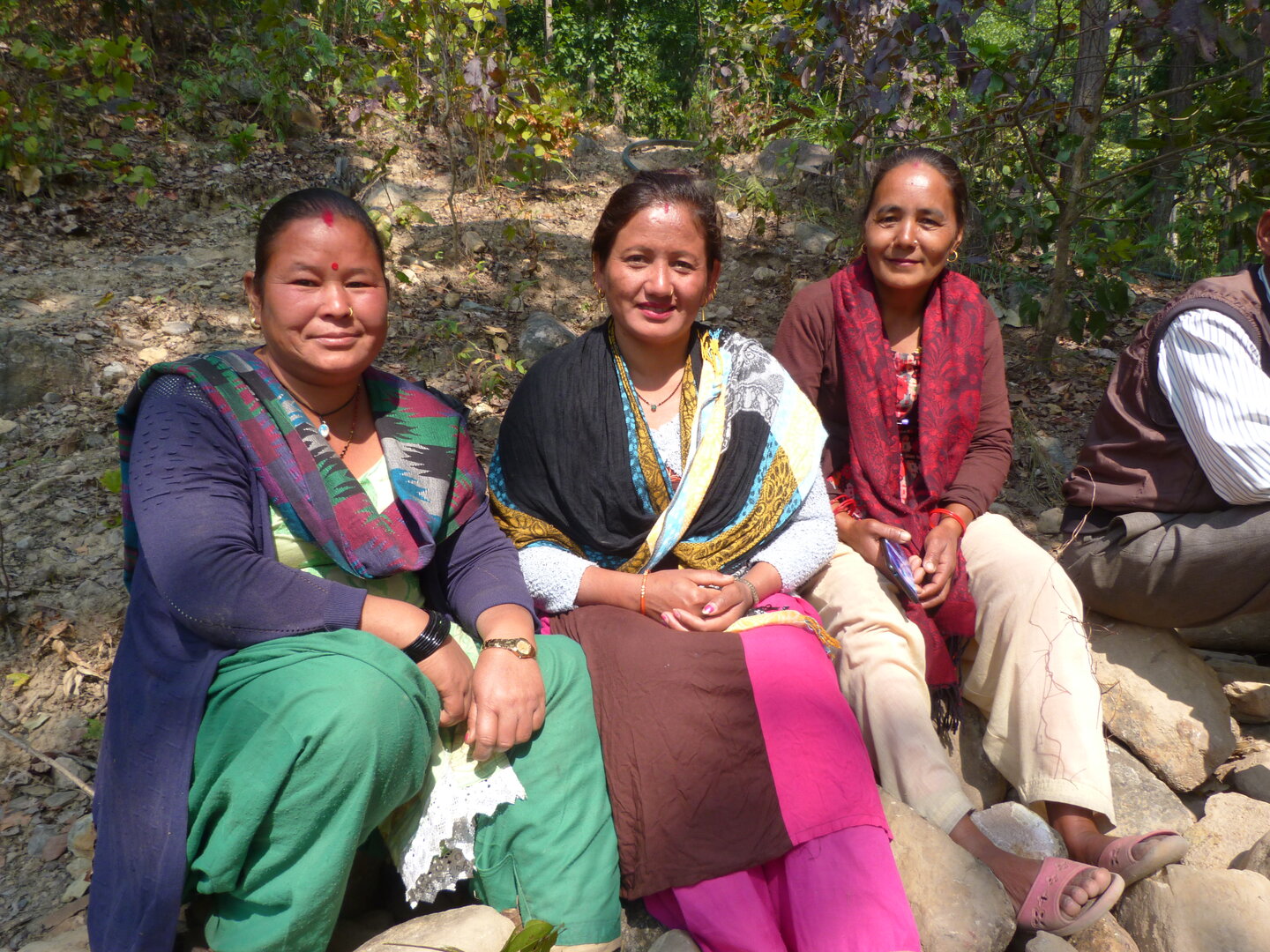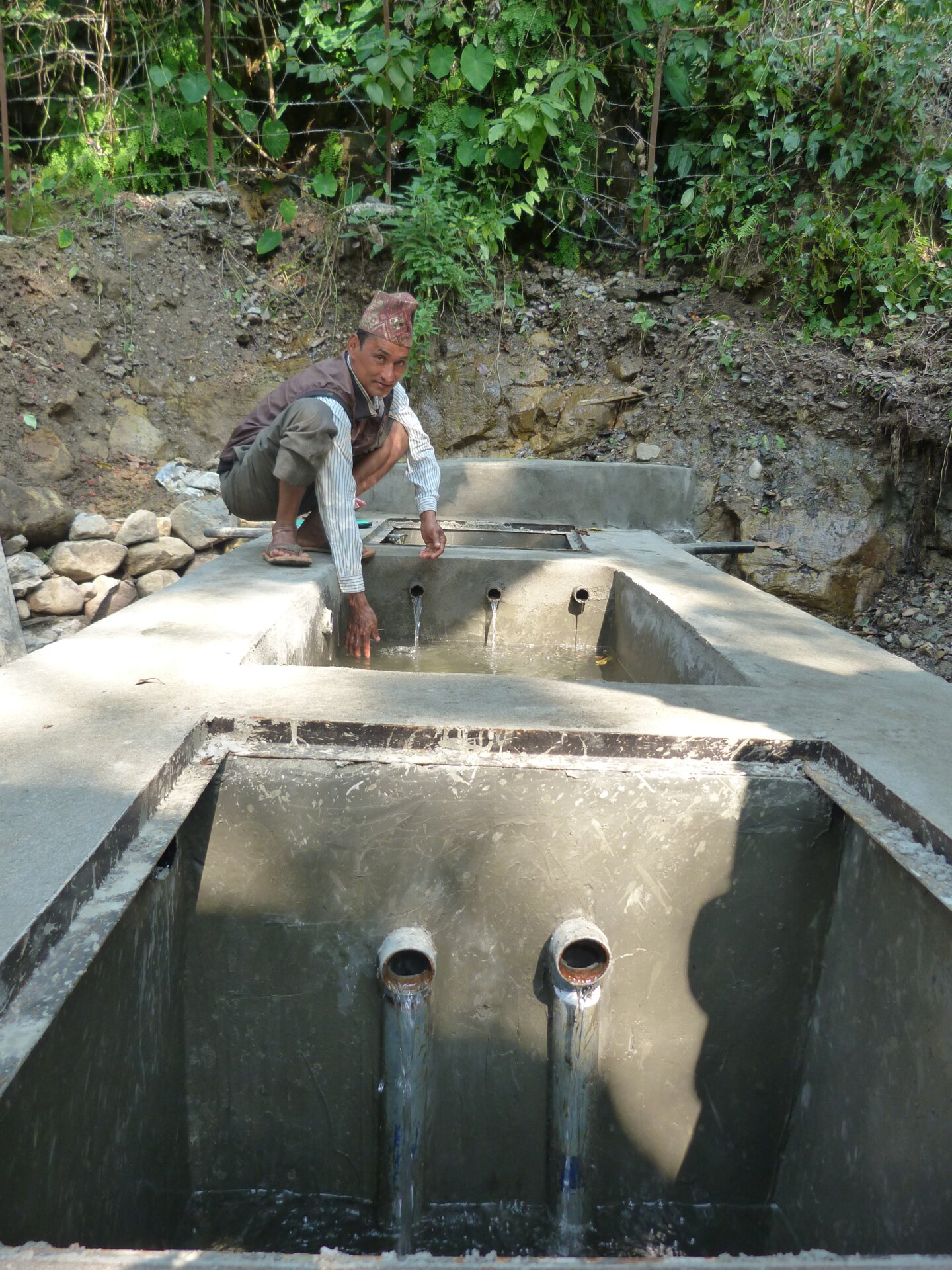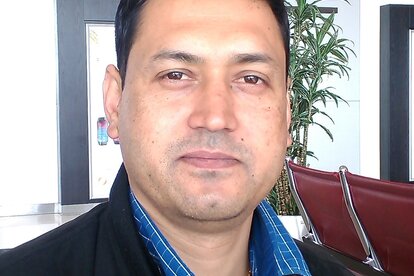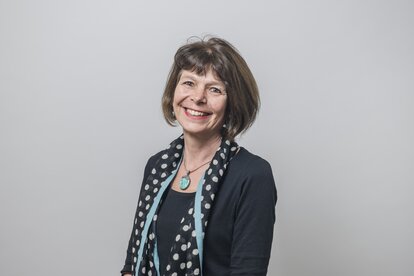We have left our vehicle in the small settlement of Lekhbesi and walked a few hundred meters across stubble-covered paddy land – currently fallow, until the monsoon rains begin in June. Where the fields end, the forest begins, and the land starts sloping upwards. A very short climb brings us to a group of men and women building a large domed water tank – the men working on the tank itself, the women sifting sand for making mortar. One large 20,000-liter tank is nearing completion; the foundations of a second smaller one of 10,000 liters have been laid. The people working are members of the Lekhbesi Water Users and Sanitation Committee (WUSC), and they are expecting us. They pause in their work to sit and talk for a while.
The changing pattern of settlement
The name Lekhbesi means “at the bottom of highland” – and that is exactly where the settlement lies, close to the river running through the valley and, more importantly, clustered along the dirt road that reached the area some 25 years ago. According to Gita Budha, who grew up in the area, before the road came there were just four or five houses where now there are 82. The paddy land already existed when she was a girl, but people lived higher up, away from the valley where they feared catching the “lowland disease” – malaria. In her grandfather’s time, it was common for groups of men to venture down to the border settlement of Nepalgunj once or twice a year to sell ghee (clarified butter) and return with salt – a round trip of 10 – 12 days of hard walking.
Within the space of 25 years, malaria has been almost completely eradicated, and livelihoods have changed significantly. People prefer to live close to a road, with all the access to schools, markets and other facilities that this affords, rather than high on a hillside. Household incomes are supplemented by remittances from family members working abroad, in India or beyond. The village has grown rapidly and is on its way to becoming a small town - a pattern repeated in many parts of Nepal.

Gita and the other women explain that until now, they have fetched drinking water from a small spring on the other side of the valley. Water for other purposes used to come from the river until nine years back, when a water supply scheme was installed by another agency close to where the new one is being constructed, using the same source. Unfortunately, though, the water was often brown and during the peak dry season, it smelled bad – so they used it for washing and other such purposes but continued to fetch drinking water from further away. The new water scheme will result in each household having a private tap stand supplying drinking water to their doorstep. This is in accordance with a “one tap one household” policy of the newly established Lekhbesi municipality.
A gravity flow water supply system
The total renovation of the Lekhbesi water scheme is being implemented by Helvetas with funds from charity: water, the Lekhbesi municipality, and the users – the latter partly through the contribution of a rupee equivalent of about USD 10, as a maintenance fund, for a private tap stand, but mainly through their labor. The proportion works out to be 51% through charity: water/Helvetas; 20% through the municipality; and 29% through the Water Users and Sanitation Committee members themselves. Charity: water is a new donor for Helvetas in Nepal, and an important one in the water sector.

Led by the WUSC chair, Dil Bahadur Tiwari, we follow the pipeline for the water tanks upstream to the source, or rather sources; the scheme is fed by three springs. The 1,800m long trench has already been dug and the pipe laid; all 82 participating households were allocated a section and sent at least one laborer to work on it. The springs are located within a privately-owned area planted with huge banana trees; with thick leaf litter on the ground, it is easy to see why water could have been discolored brown. Before any renovation work started, discussions were held with the landowner, who signed a contract guaranteeing continued access to the source – which is fenced off, albeit with rusting barbed wire that needs to be renewed and repositioned. A graded collection chamber with a sand filter has been constructed, into which the waters from the three springs are channeled. The water emerging from the outlet is clear; the WUSC intends to test it for E.coli on a regular basis both here and at the tanks as well as at some of the eventual private taps stands. Water samples will be sent to a small rural laboratory established in another water supply scheme through Helvetas support.
Looking to the future
Progress on the scheme all seems on track. For the 82 households in the current settlement, and especially the women whose task has been to fetch water daily, it will undoubtedly ease their lives. Assuming good maintenance – for which a maintenance worker is trained by Helvetas and employed by the WUSC – the scheme should function for at least 20 years before any major repairs are needed. But with the population of Lekhbesi likely to expand, what will the future bring? Parbisha Kharel, another WUSC member, has a ready answer,
“We are uneducated and illiterate, we don’t know much, but we can manage to do this [the scheme construction]. However, our children are going to school and getting a good education. They will be clever; they will know where to find water in future.”
Indeed, it is for the current generation to ensure that the next has all possible opportunities to thrive.



